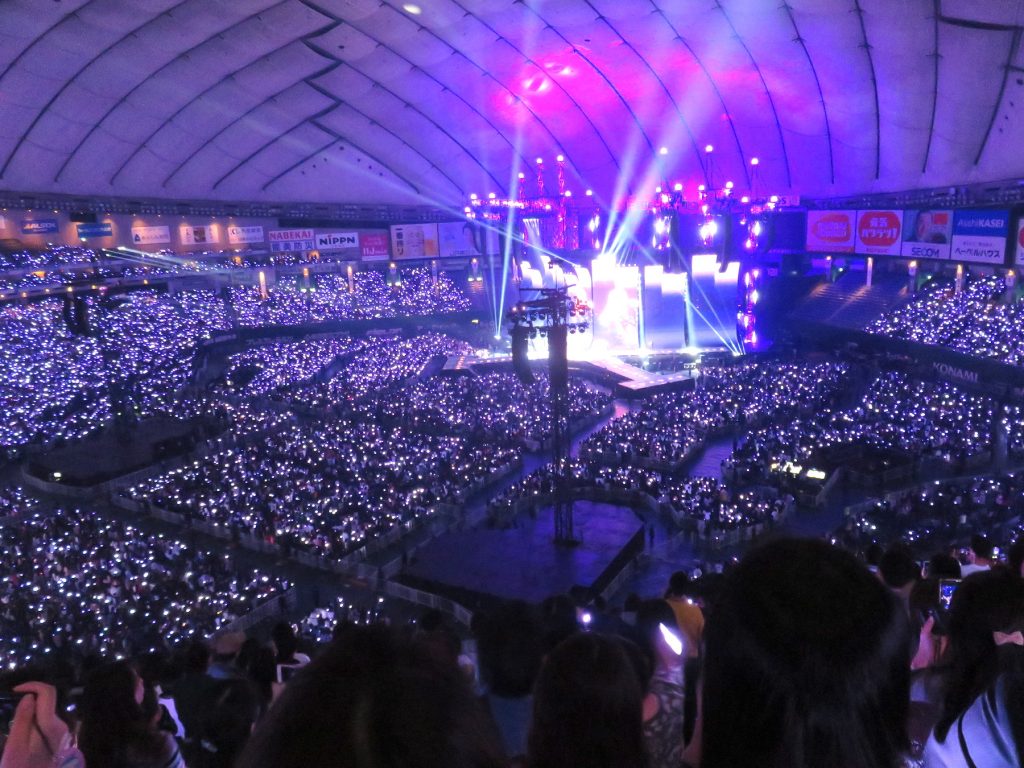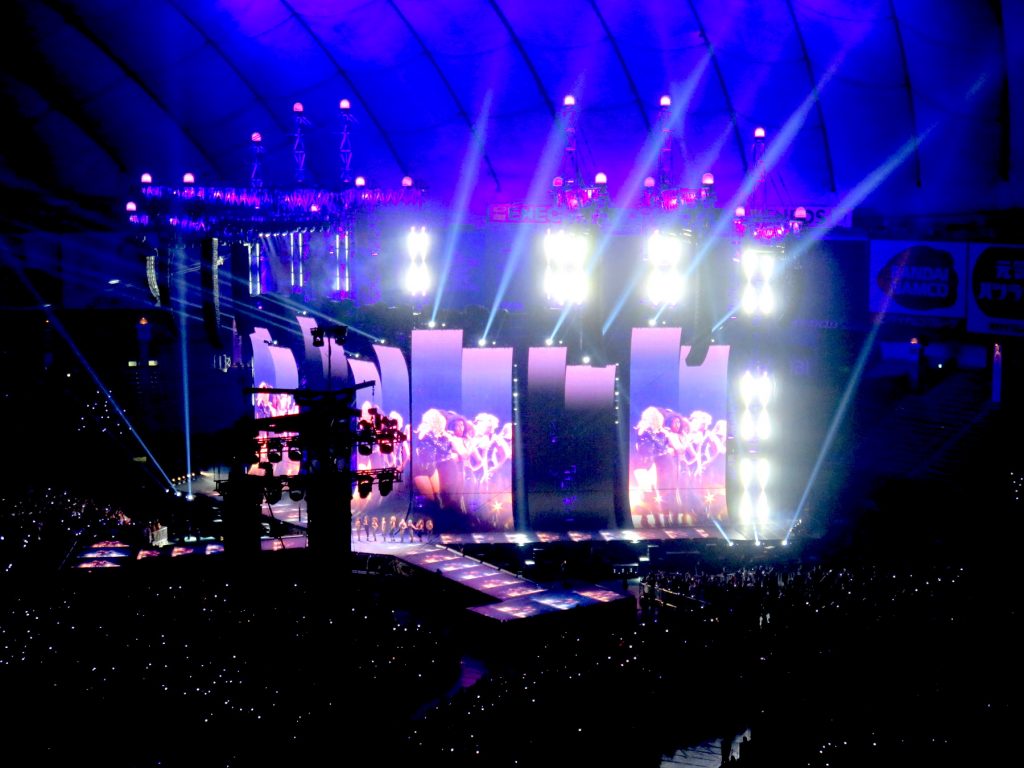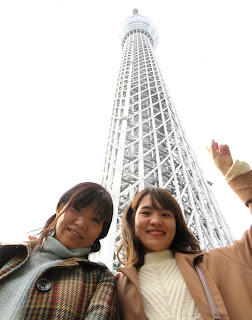
At least that was the case with my first major concert here, which was Lady Gaga in Kobe, April 2010. She was near the peak of her international acclaim. Understandably, this was a big event by any measure in any country -- at least in terms of pop culture extravaganzas -- an arena concert with tens of thousands of adoring fans, expectations maxed out by all of the hoopla and press lavished on Gaga over the previous two years, as she started pumping out hit song after hit song and became the megastar talk of the town -- which included every town on the planet that had electricity and TV screens.
The Lady was in good form. But honestly, the audience provided more than its share of fun and excitement. It was pop diva cosplay at its finest!
Fast forward 8 1/2 years -- OMG! has it been that long? -- my wife Masumi, her daughter Izumi, and yours truly take the overnight bus to Tokyo and kill the day seeing the sights.
Finally, we ambled like sheep with close to 50,000 other folks into the Tokyo Dome for an evening of pop entertainment featuring Charli XCX and Taylor Swift.
The audience again was a big part of the action. But it wasn't so much the result of hordes of Taylor Swift wannabees. It was because we were actually wired into the lightshow itself. Maybe 'wired' is a poor choice of terms. Every member of the audience was given an LED wrist band as we entered the arena, each of which was wirelessly connected to the computer-controlled light board. It was mind-blowing to see whole sections light up and flash in one color, the other sections different colors. Sometimes a huge wave of color swept around the arena, other times the entire audience sparkled like tens of thousands twinkling stars. Technology! Things had come a long way since my last stadium tour experience in Kobe, which by comparison now seems almost primitive.
Of course, enormous flat-panel screens have been around for quite some time. But for Ms. Swift, the show's producers spared no expense.


Was I impressed? Taylor Swift has some great songs. But regardless of the incredible advances made in audio and lighting, an arena is an arena and it sounds like an arena. It was loud and a bit cacophonous. despite Taylor's best efforts to connect with each and every one of us as her much treasured fans, songs which might be savored at home with earbuds or headphones in a dimly lit room with a banana daiquiri at your side, or even danced to in a club with good friends and good cheer all around, were as personal as the opening ceremonies at the Olympics. Lots of spectacle, not much soul, and absolutely no heart. Sorry, Taylor. My advice: Never hold a cocktail party in an airplane hangar.
At the same time, we all knew what we were getting in to. So the audience loved it. Smiles all around, everybody had a good time. There was a lot of love in the Tokyo Dome from beginning to end.
Of course, I've always heard that Western artists love to play Japan, because the fans are always so warm, enthusiastic, and appreciative. They are!
I wrote before, about Japan's love affair with Western culture, especially pop culture. While it makes sense for obvious reasons, it's still somewhat a source of bewilderment -- or is that reverse cultural chauvinism? It makes sense because Western culture driven by multinational capitalism is turning the world into a big homogenous cream puff. And who doesn't like cream puffs? Even so, having traveled as much as I have over the past 14 years, sampling if only superficially the cornucopia of cultures, dress, art, music, food, lifestyles, community and family organization, spiritual landscapes, and social values that are still out there, I hate to see everything replaced by cream puffs.
In many ways, the Westernization of Japan highlights those highly traditional aspects of the country which make it uniquely Japan. But the question arises: How far can this go? How Americanized can Japan become before it just becomes a bad copy of a once-great nation which has become a faltering empire facing inevitable decline and dissolution? Perhaps, if nothing else, Japan might start looking for a better role model.
None of this, of course, came up at the Taylor Swift concert. Why would it?
[ This originated at the author's personal website . . . https://jdrachel.com ]
Life In Japan: Taylor Swift in Tokyo






